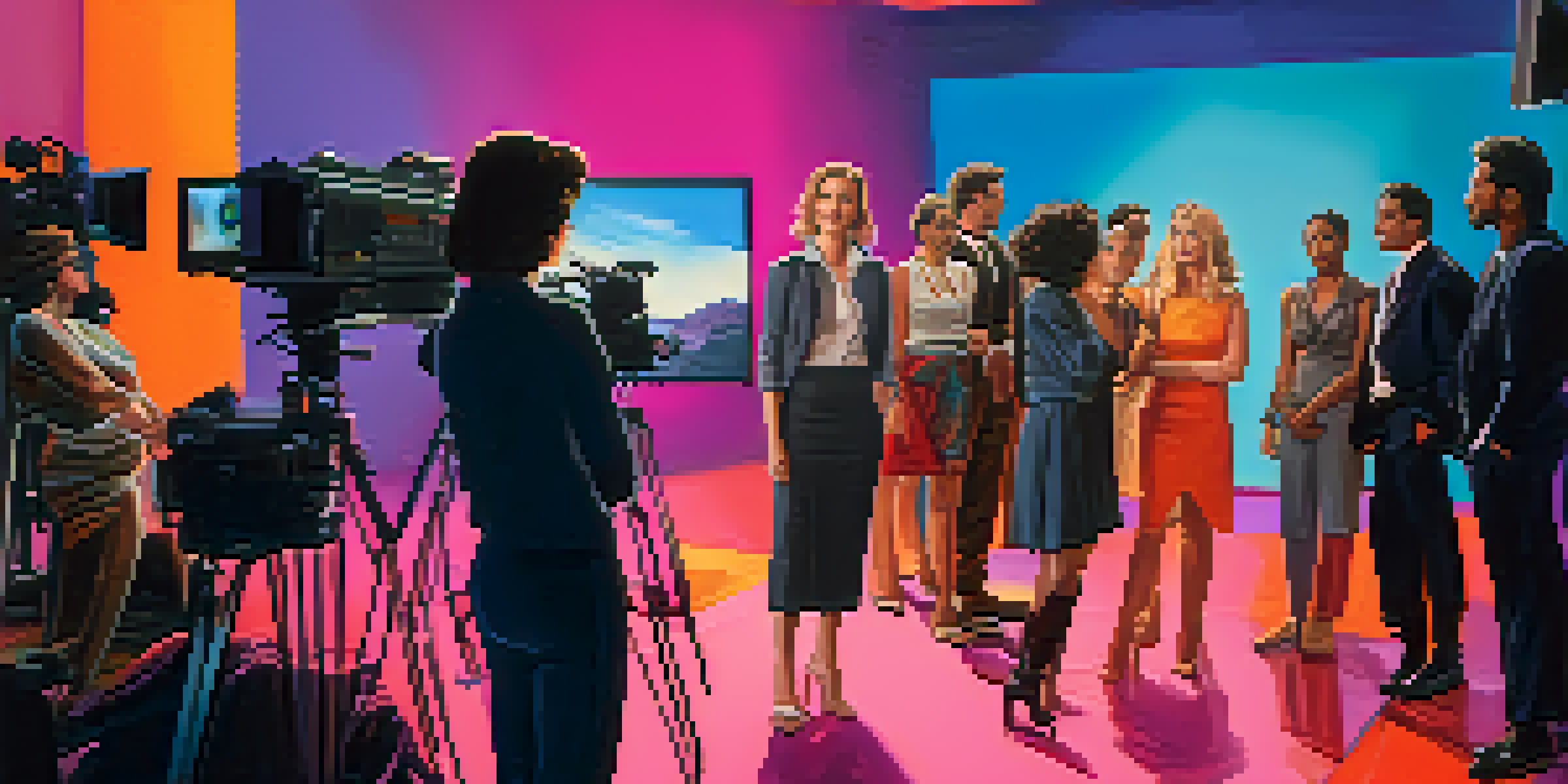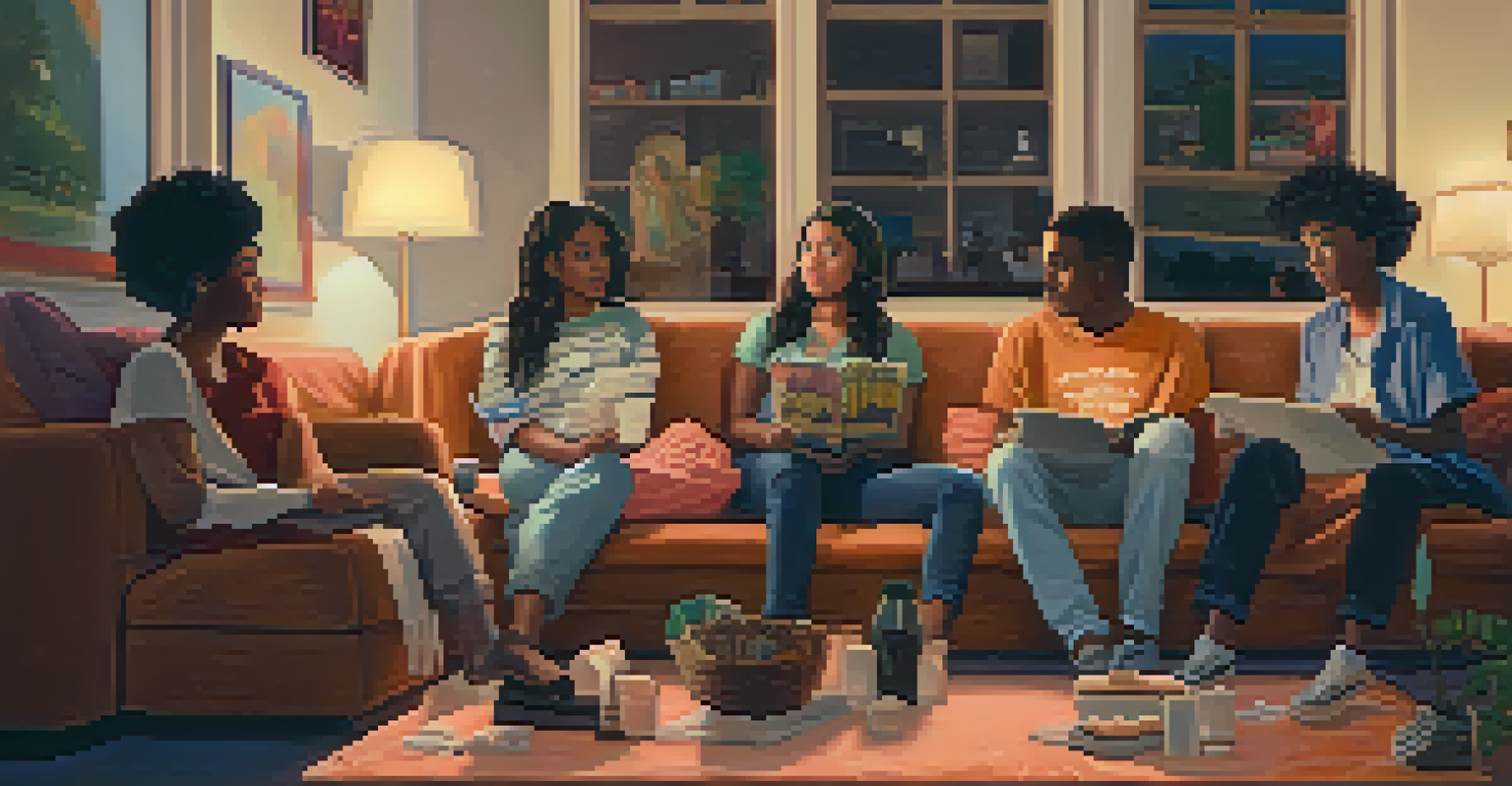Breaking Stereotypes: Hollywood's Role in Gender Norm Disruption

The Historical Context of Gender Norms in Film
For decades, Hollywood has been a mirror reflecting societal norms, including gender roles. In the early years of cinema, women were often confined to submissive roles, while men were heroic figures. This portrayal reinforced traditional beliefs about masculinity and femininity, shaping public perception.
Cinema is a reflection of society, and in its evolution, it reveals the changing perceptions of gender roles.
As society evolved, so did the narratives presented in films. The feminist movements of the 1960s and 70s started to challenge these norms, leading to more complex female characters. Yet, even as progress was made, many stereotypes persisted, often relegating women to secondary roles.
Understanding this historical context is essential to appreciate the impact of modern films. Today, filmmakers are increasingly aware of their responsibility to break these stereotypes, paving the way for more authentic representations of gender.
Challenging the Male Hero Archetype
The traditional male hero archetype has dominated Hollywood for ages, portraying men as strong, fearless leaders. However, contemporary films are beginning to challenge this notion by presenting vulnerable male figures. These characters, as seen in movies like 'A Star is Born', demonstrate that masculinity can encompass emotional depth and sensitivity.

This shift is crucial because it allows audiences to see that strength isn't solely defined by toughness. Instead, it embraces a more holistic view of what it means to be a man. As these narratives gain traction, they provide a platform for discussing mental health and emotional expression among men.
Evolving Gender Norms in Film
Hollywood is gradually shifting from traditional gender roles to more complex and authentic representations of both men and women.
Ultimately, by redefining the male hero, Hollywood opens the door for more diverse storytelling, encouraging viewers to question outdated ideals about masculinity.
Empowering Women Through Diverse Storytelling
Women in film are no longer just sidekicks or love interests; they are leading protagonists with rich, multifaceted stories. Films like 'Wonder Woman' and 'Hidden Figures' showcase strong female characters who defy stereotypes and inspire audiences. These stories not only entertain but also empower women by showing them in positions of strength and influence.
Diversity in storytelling is not just a trend; it's a necessary evolution that leads to a more inclusive culture.
Moreover, diverse storytelling helps to highlight the varied experiences of women across different cultures and backgrounds. This representation fosters a greater understanding of women's issues globally, encouraging empathy and support among viewers. It also provides role models for younger generations, showing that women can achieve anything.
As Hollywood continues to embrace diverse narratives, the impact on societal views of gender norms will likely be profound, fostering a more inclusive culture.
The Rise of LGBTQ+ Representation in Film
Hollywood has made significant strides in representing LGBTQ+ characters and stories, contributing to the disruption of traditional gender norms. Films like 'Moonlight' and 'Call Me by Your Name' have brought nuanced LGBTQ+ narratives to the forefront, challenging binary understandings of gender and sexuality. This representation is vital for visibility and acceptance.
By showcasing diverse sexual orientations and gender identities, these films encourage audiences to broaden their perspectives. They demonstrate that love and identity are not confined to traditional norms, and they resonate with viewers who may feel marginalized. This shift in storytelling allows for a more inclusive understanding of human experiences.
Rise of Diverse Storytelling
Films are increasingly showcasing strong female protagonists and diverse narratives that empower women and represent various cultures.
As LGBTQ+ representation grows, it plays a crucial role in redefining societal perceptions of gender, helping to dismantle preconceived notions about what it means to be a man or a woman.
The Impact of Streaming Platforms on Gender Norms
With the rise of streaming platforms like Netflix and Hulu, there's been a surge in content that challenges traditional gender norms. These platforms often prioritize diverse stories that may not have found a place in mainstream cinema. As a result, audiences are exposed to a broader range of narratives that defy stereotypes.
For example, shows like 'The Crown' and 'Orange is the New Black' feature strong female leads and complex characters that challenge societal expectations. This shift in content not only entertains but also sparks conversations around gender identity and roles, pushing boundaries further than traditional media.
Streaming services allow for experimentation with storytelling, making it easier for creators to take risks and present diverse perspectives that challenge the status quo.
Audience Reception and Its Influence on Hollywood
The audience's reception of films and shows plays a crucial role in shaping Hollywood's approach to gender norms. As viewers increasingly demand authentic and diverse representation, studios are compelled to respond. This shift is evident in the box office success of films that feature strong, complex characters outside traditional norms.
Social media has also amplified audience voices, allowing viewers to share their opinions on representation and storytelling. This feedback loop encourages filmmakers to consider the impact of their work on societal views of gender. As audiences become more vocal, they influence Hollywood's direction, pushing for change.
Impact of Streaming on Representation
Streaming platforms are providing a space for content that challenges conventional gender norms, allowing for greater experimentation in storytelling.
The growing demand for authentic representation signifies a cultural shift, urging Hollywood to continue breaking down stereotypes and embracing diversity in storytelling.
Looking Ahead: The Future of Gender Representation in Film
As we look to the future, the potential for continued disruption of gender norms in Hollywood remains promising. With an increasing number of female directors, writers, and producers, there's a greater chance for authentic stories to emerge. This shift not only enriches the narratives presented but also ensures a variety of perspectives are heard.
Moreover, the ongoing conversations surrounding gender identity and representation continue to shape the film industry. As society evolves, so too will the stories told on screen, reflecting a more inclusive view of gender dynamics. This ongoing dialogue is vital for progress.

In conclusion, Hollywood's role in breaking stereotypes is significant and ongoing, paving the way for a more nuanced understanding of gender in the future.